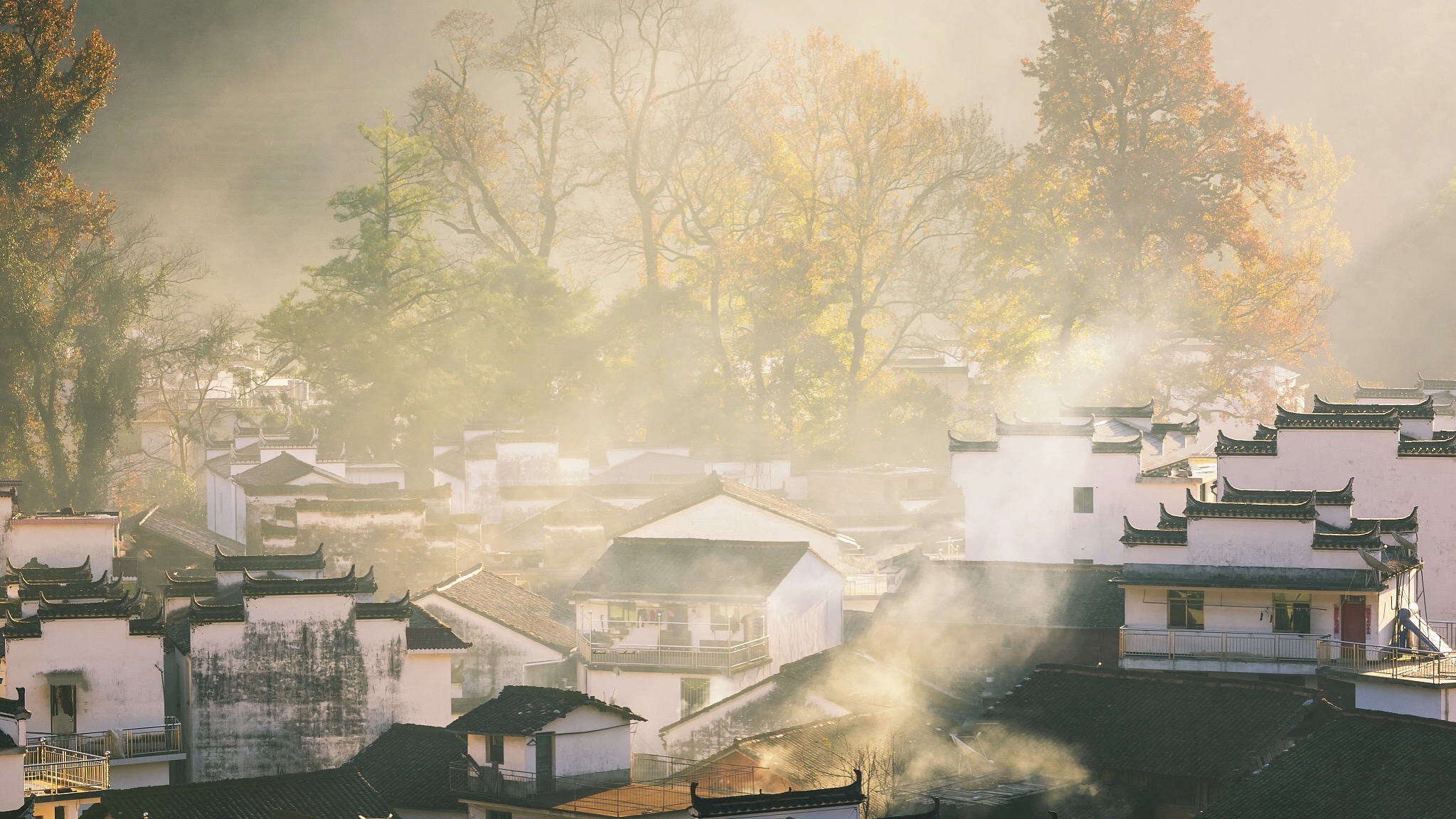01:29

The local government in east China's Anhui Province has taken advantage of its cultural and travel resources to develop rural tourism to further increase the incomes of village residents and improve their living standards.
Yangchan Village in Shexian County of Huangshan City used to be a poverty-stricken village due to its harsh geographical location.
Located on a steep mountain 800 meters above sea level, the village is built on a barren land that used to be accessible via only one country road. Many villagers had to struggle in that long period of underdevelopment.
"At that time, we had almost no income. We needed to borrow money from our relatives, friends and siblings to support our children to continue studies at high school and college," said Zheng Zhihua, a Yangchan resident.
The local government began to develop rural tourism in 2013 by highlighting the traditional Chinese Hui-style buildings against the mountain.

Traditional Chinese Hui-style buildings in Huangshan City, Anhui Province, east China. /CFP
Traditional Chinese Hui-style buildings in Huangshan City, Anhui Province, east China. /CFP
The fame of Yangchan Village gradually increased after the village began holding a series of activities including the special autumn festival and the photography festival.
The sales of local agricultural products including tea leaves and dried bamboo shoots have improved residents' incomes due to the tourism efforts.
"Such a group of intact and original Hui-style buildings located at the top of mountains is quite rare in the whole country. I think that these buildings will bring opportunities for the locals since this village is really a good place," said Ye Chunhua, a tourist.
After developing rural tourism, we are able to earn 10 times more than what we used to, according to local resident Zheng.
The grey-tiled and white-washed Hui-style architecture is one of the time-honored Chinese architectural styles, which dates back to the Song Dynasty (960-1279). Ancient villages Hongcun and Xidi are two most well-known Hui-style scenic spots, which were collectively declared a UNESCO World Heritage Site in 2000.
(Cover image: Grey-tiled and white-washed Chinese Hui-style buildings. /CFP)

